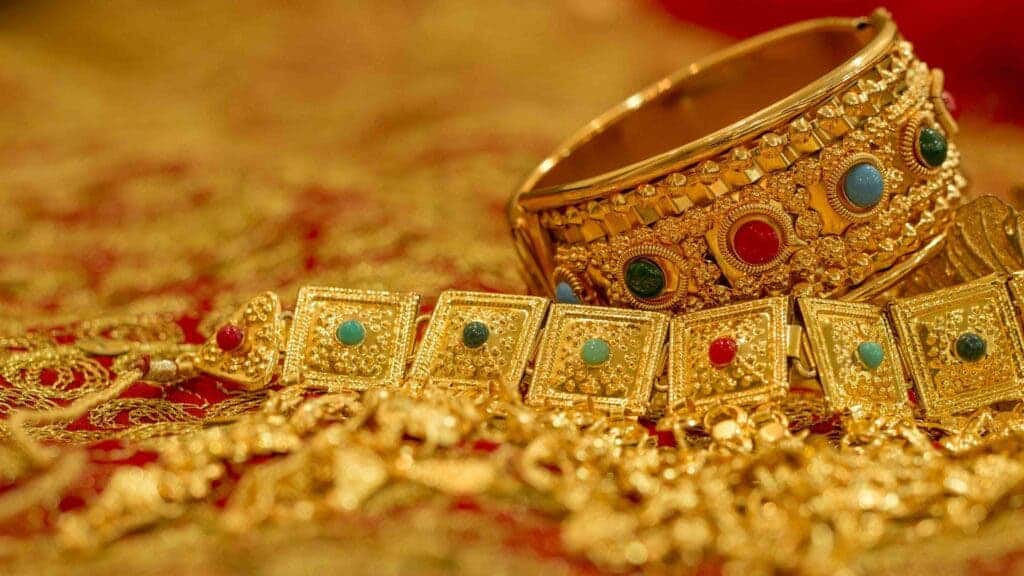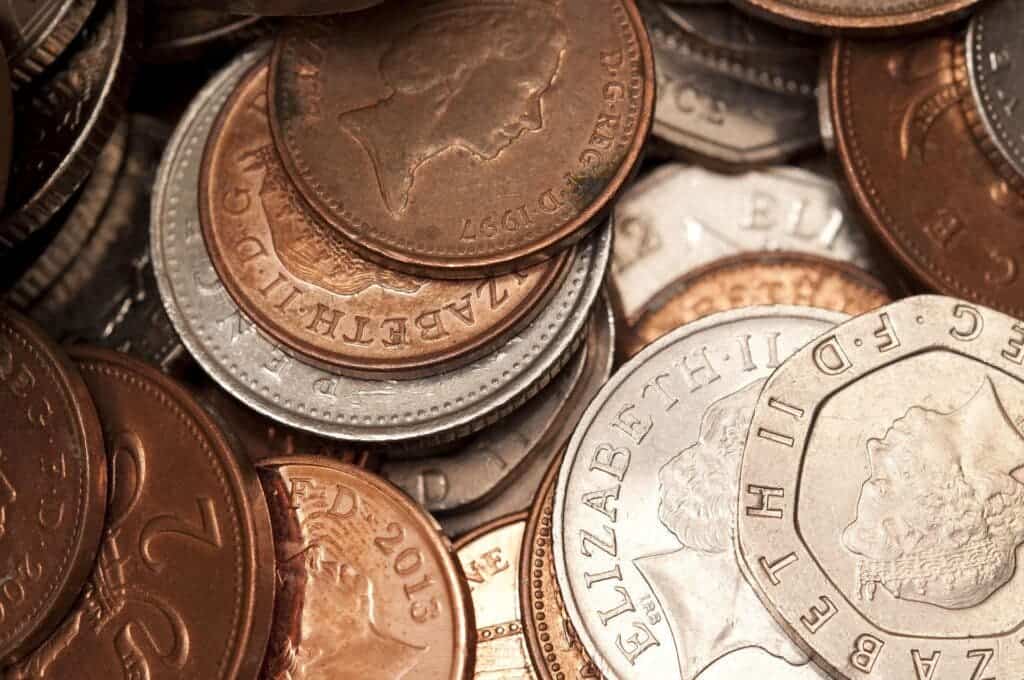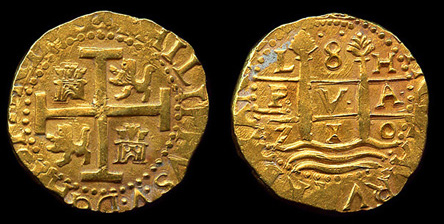Few metals throughout history can boast the same desirability as gold. It has served as a hard currency for virtually every civilization that had access to it, fueled exploration and exploitation, and directly underpinned the dominant economic policy (mercantilism) for at least two centuries.

It is, by and large, one of the most valuable and impactful metals humanity has ever used, despite it being quite soft and very shiny. So what exactly made gold so valuable and expensive, and why did various peoples show such interest in beating it into coins? Surprisingly, it’s not so much the properties that gold has, it’s what other elements don’t have. The fact that it’s pretty and shiny also helps, too. So let’s get into it.
Coins a’minting
Most transactions today involve either a swap of pieces of paper and plastic, or moving some virtual bits from one account to another. It’s quite a fast and convenient way of buying and selling. On the surface, it’s a very simple process: you give me what I want, I give you these colorful squares in exchange, then we both ride off into the sunset.
But if we delve a bit deeper, this transaction is only made possible by a huge and unseen net of systems and institutions working in concert. For starters, both parties in our hypothetical transaction recognize that the currency involved is desirable and holds value — this is guaranteed by the governments that be. Secondly, money is easy to carry around (portability), either physically in our pocket or on a card, and to count. Thirdly, we know, through various means, that the money swapping hands isn’t fake (it has validity) that it is a finite, often limited, resource (scarcity), and that it won’t rot over time (longevity). Finally, we both know that touching the money won’t kill us — it is safe.
Ultimately, what you want in a coin is for it to be a small but dense repository of value so you can carry a lot of purchasing power easily, long-lasting so you can store it and it won’t just waste away, distinctive (so it’s easy to tell it’s the real deal), in limited supply to some extent (either through natural or policy constraints), and safe to handle.
Which brings us neatly to gold. There are around 118 elements on the periodic table, most of them natural, some of them only seen in the lab for fractions of a second at a time. Not many of them are usable for coinage, because not many of them share in those traits listed above. We’ll look at each of the properties above to understand why certain elements just don’t work as money. However, we’ll leave value out for right now, as it’s a very complex concept that we should look at in a later article.

Portability: elements that are gaseous or liquid at room temperature just don’t make for very convenient money. They’re not very portable, as you need a vessel to carry them in; such vessels can break, in which case your life savings might easily go ‘poof’ or literally down the drain. Around 13 chemical elements take the form of a gas (nitrogen, oxygen, the halogen group, and the noble gases) or liquid (bromine and mercury) natively, so we can cross these off the list.
Denominations would also be a bit hard to pull off with fluid currencies. Let’s say that the units of choice in our make-believe economy are flasks of mercury and flasks of chlorine gas to serve as subdivisions. What if I need to pay someone three-and-a-half bottles of mercury and don’t have any change on hand — do I pour some out? How do I measure it accurately? How do I know you didn’t dilute the ‘coin’ with some other compound? This problem only gets worse with gases.
Finally, all materials react to changes in temperature and pressure — but fluids react the most. Any such currency would probably require special storage conditions, to avoid both physical damage to their containers, as well as any possible losses that would be incurred by changes in temperatures. Carrying coins on your person over long distances would be much more difficult in this case.
In regards to validity, gold has the benefit of being, well, golden. It’s the only elemental metal bearing this color, which means that it’s quite hard to fake. Alloys and minerals like bronze, brass, and pyrite can pass for it, to an extent, but other properties can be used to check whether a coin is made of gold or not. Pure gold is very soft for a metal, so much so that people used to bite coins to check for gold — human teeth enamel has a Mohs hardness of 5, while gold has only 2.5, so your teeth can put a dent in a piece of gold, but not in a gold-plated coin. Most other metals in the periodic table, with some noteworthy exceptions such as copper, are silvery-gray in appearance, so they can, to an extent, be substituted for one another in a coin.
Its longevity is the product of gold’s very, very limited chemical reactivity. Noble metals and noble gases aren’t called ‘noble’ because they’re expensive (although, they are), they’re called that because, like nobles of old, they don’t mingle with the great masses, chemically speaking. Even runner-ups silver and copper get degraded over time — silver tarnishes due to reactions with sulphur compounds in our sweat or other sources, and copper develops patina due to oxygen. Gold doesn’t rust, it doesn’t tarnish, and doesn’t get splotches on it because gold will react with almost nothing. It doesn’t get degraded by virtually any acid, or bacteria, or alkaline solution. To sum it up, there’s not much you can do to damage gold short of throwing it into some King’s Water (aqua regia), which is a mixture of several strong acids.
Scarcity and safety are pretty straightforward: gold is very rare, so people can’t get the raw materials to make their own coins and ruin the economy. Because it’s so chemically inert, touching gold won’t kill you. You can even swallow some up and still be OK, as fancy pastry-shops are happy to remind you. For comparison, think of sodium, which literally explodes on contact with water.
An ideal mix of qualities and faults
So far, so good — but we’ve yet to answer ‘why gold?’. Sure, it’s portable and distinctive, but arguably so is copper. Mercury is very distinctive, even if harder to carry around safely, and lead is very dense even if somewhat silvery. Carbon is safe to handle; platinum or uranium is much rarer. What gives?

Well, here we get to the meat of it: gold (and silver to an extent) is uniquely suited to making coins because it has the right proportions of each trait for the time it was used. It’s rare, but not impossible to find and extract. It is supremely long-lasting and safe, easy to verify and carry, easy to work into sanctioned shapes (coins).
Is uranium rarer? Probably — but it’s so rare that we simply didn’t know it existed for the longest time, and it will probably slowly kill you, which is not ideal. Platinum is just as if not less reactive than gold, but it’s way scarcer on Earth, and requires much, much higher temperatures (read: advanced tech and know-how) to extract and process. Carbon is just as safe, but it’s lying around quite literally everywhere, so it’s worthless as coinage. And so on.
Gold imposed itself because it had just the right amount of each of these traits to make it an attractive option. It’s really pretty to look at and shiny, which can only help, as does gold’s softness — allowing for official, state-guaranteed coins to be minted with the proper markings. Silver and copper have established themselves as the runner-up metals for coinage throughout history as they share some of the properties of gold, but not enough to put them on equal footing: silver degrades somewhat and is much less distinctive, while copper degrades and is too abundant to be properly controlled by authorities.
Still, as history has shown, gold is a workable but not ideal medium for an economy. It’s durable and rare enough to be used as a placeholder for value but there’s only a limited amount of gold that’s practically accessible to humanity on Earth. Things will go swimmingly while your economy is small, but, eventually, you mine all the gold out. After that you can’t make more money to accommodate demand, you get deflation (prices drop), the economy grinds to a halt and then there’s riots. Not good.
The reverse of the coin is that you can also have too much gold. It’s a real problem, I assure you, as Spain can attest. After discovering the Americas, Spain set to work becoming ridiculously rich in the 15th and 16th through a combination of exploiting the locals and treasure fleets. These were not named in jest — they were, to the fullest extent of the word, fleets of ships, all laden with treasures, all coming to Spain.
“A single galleon might carry 2 million pesos [1 peso = ~25 grams of silver]. The modern approximate value of the estimated 4 billion pesos produced during the [300-year] period would come to $530 billion or €470 billion (based on silver bullion prices of May 2015),” Wikipedia explains about these fleets.
Part of these treasures were goods including spices, lumber, skins, and all manner of nice, exotic things from the Americas; but a large part was represented by silver and gold, mined for cheap. Europe’s economies at the time were still using gold (and silver to an extent) as their standard currency. This means that prices all over the continent were directly determined by how much each country had in store. Mercantilism, the idea that a country becomes richer by exporting more than it imports and gaining gold (and silver) from its partners would form out of this relationship.

But when you have a metal underpinning your currency, keeping a balance between how much of it you hoard and how productive your economy is becomes vital. To give you an idea of just how important this relationship is, know that Spain quickly became one of the, if not the, richest country in Europe at the time. It had so much money by the end of it that the Spanish crown had been throwing it away with both arms for almost two centuries — paying off their national debt, funding religious wars or naval wars with England, colonization of other continents, expensive building projects, fine imports — and they still couldn’t spend it fast enough.
Spain saw massive levels of inflation by the 17th century, to such an incredible extent that the crown had declared bankruptcy (they were the first royal rulers to ever do so) repeatedly, and there is cause to believe that these levels of high inflation affected the rest of Europe, at least Western Europe. It had so much gold relative to goods and services in its economy that it wasn’t really scarce anymore. Coins lost value, prices went right up, the economy stalled because nobody could afford to buy anything, and merchants couldn’t lower prices without incurring a loss. Then the economy ground to a halt and there were riots. Again — not good.
A word of ending
Gold is, to this day, seen as a solid repository of value. But the inability to control its supply (to either increase or decrease it) when needed shackled governments and rulers in regards to their fiscal policy. Once you link your coinage to gold and silver, your economy is at the mercy of how much of them is available in your area.
In olden, golden times, this wasn’t much of an issue; economies were pretty small, local things that moved quite slowly, had low output, and limited technological ability. Gold’s longevity, scarcity, portability, the fact that it was verifiable and safe to use made it an ideal tender, despite its limited supply. There wasn’t a technological base to design artificial money that had those traits, so we used a naturally occurring substance instead.
Today, although its properties haven’t changed and there’s more gold around than ever, it simply is too restrictive; economies are fast, dynamic, with massive outputs and impressive technical possibilities. In this world, being portable, safe, and long-lasting is not enough to keep up with economic reality — so we switched to something that’s all of that, but only artificially scarce.
Gold’s properties made it ideal for the minting of coins, and I hope you gained a better understanding of just what makes a good coin. I’ve done my best to try and discuss this topic without touching on concepts of market value or price, as they’re a whole different kettle of fish that we may open up soon. But as is always the case, gold has value because people say it has value — for its uses, its looks, or its association with status, wealth, and power.


